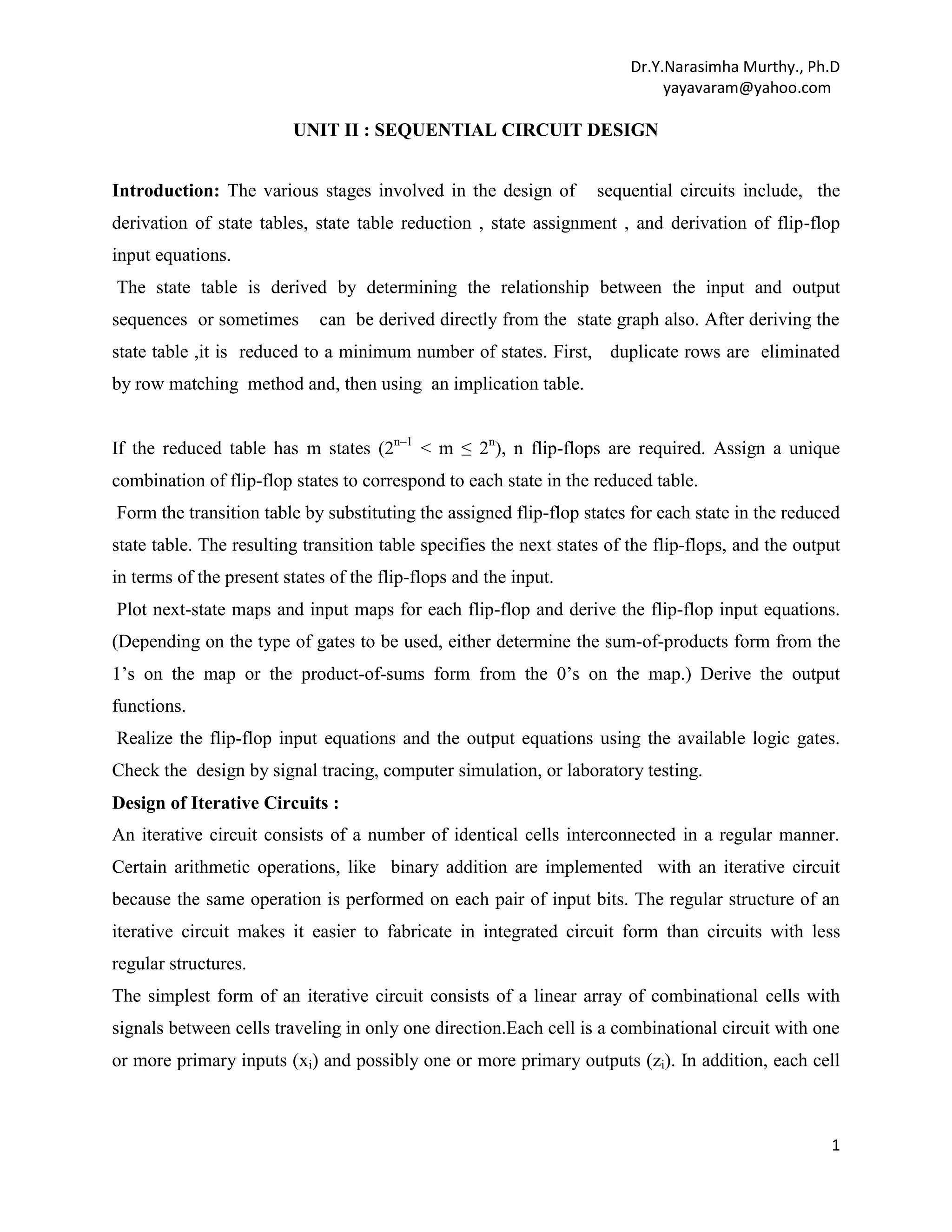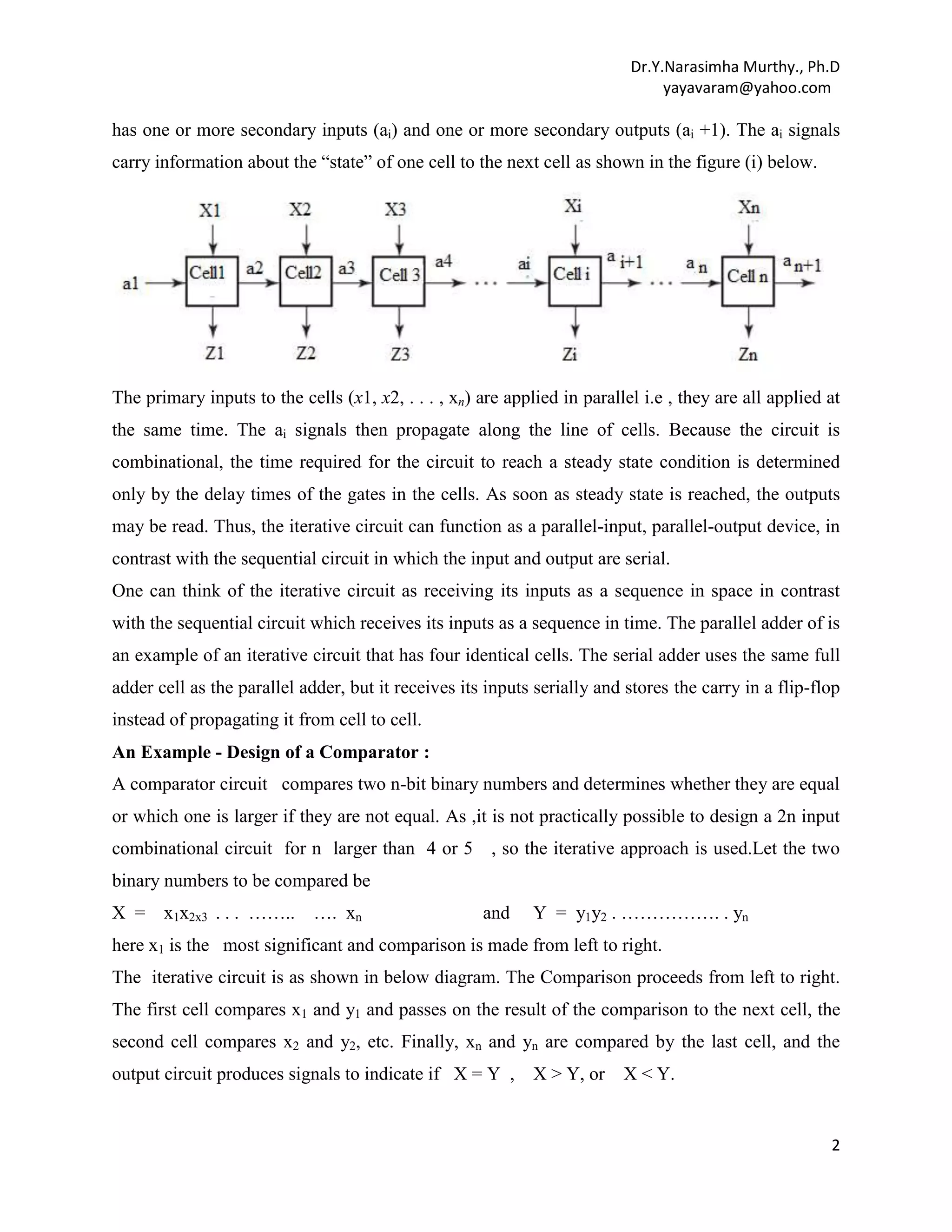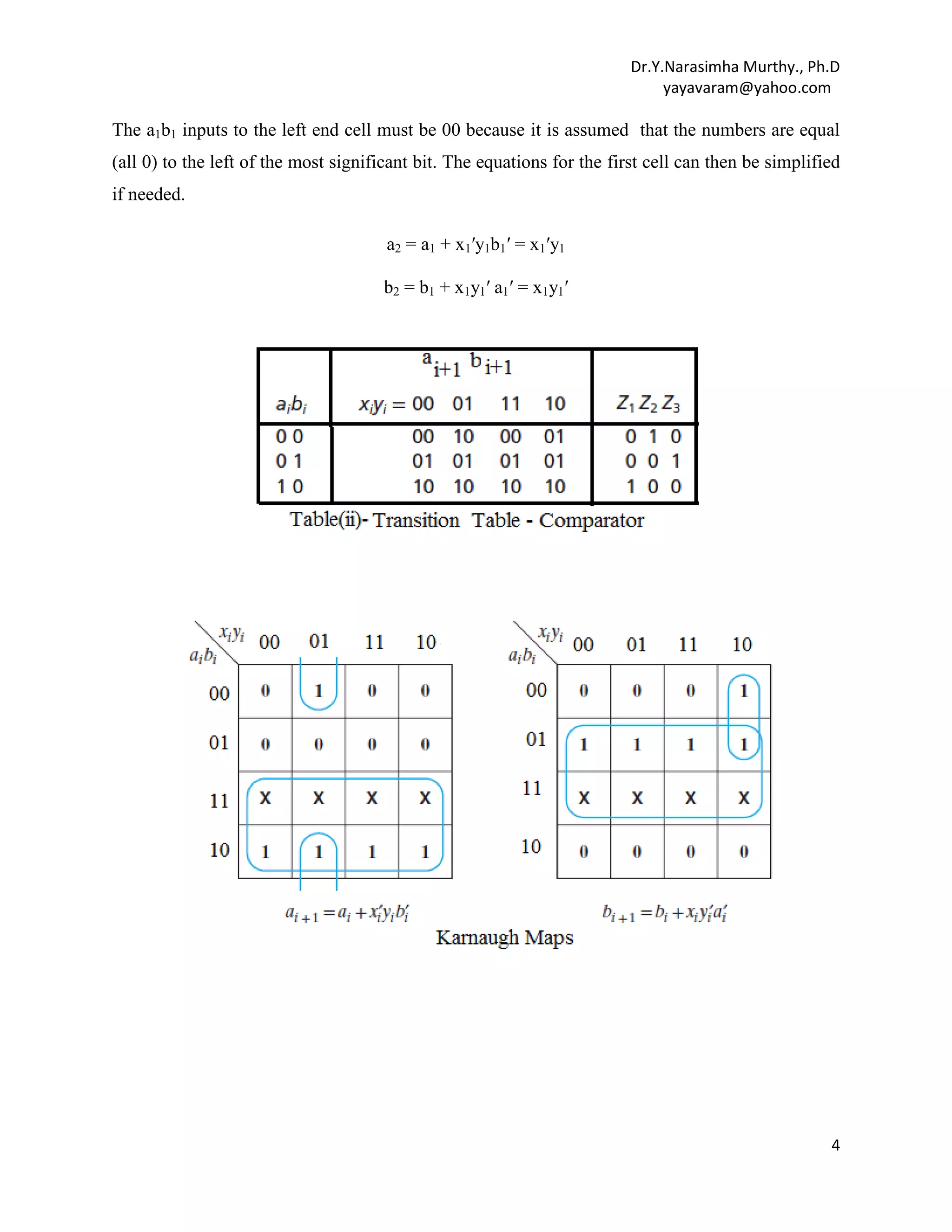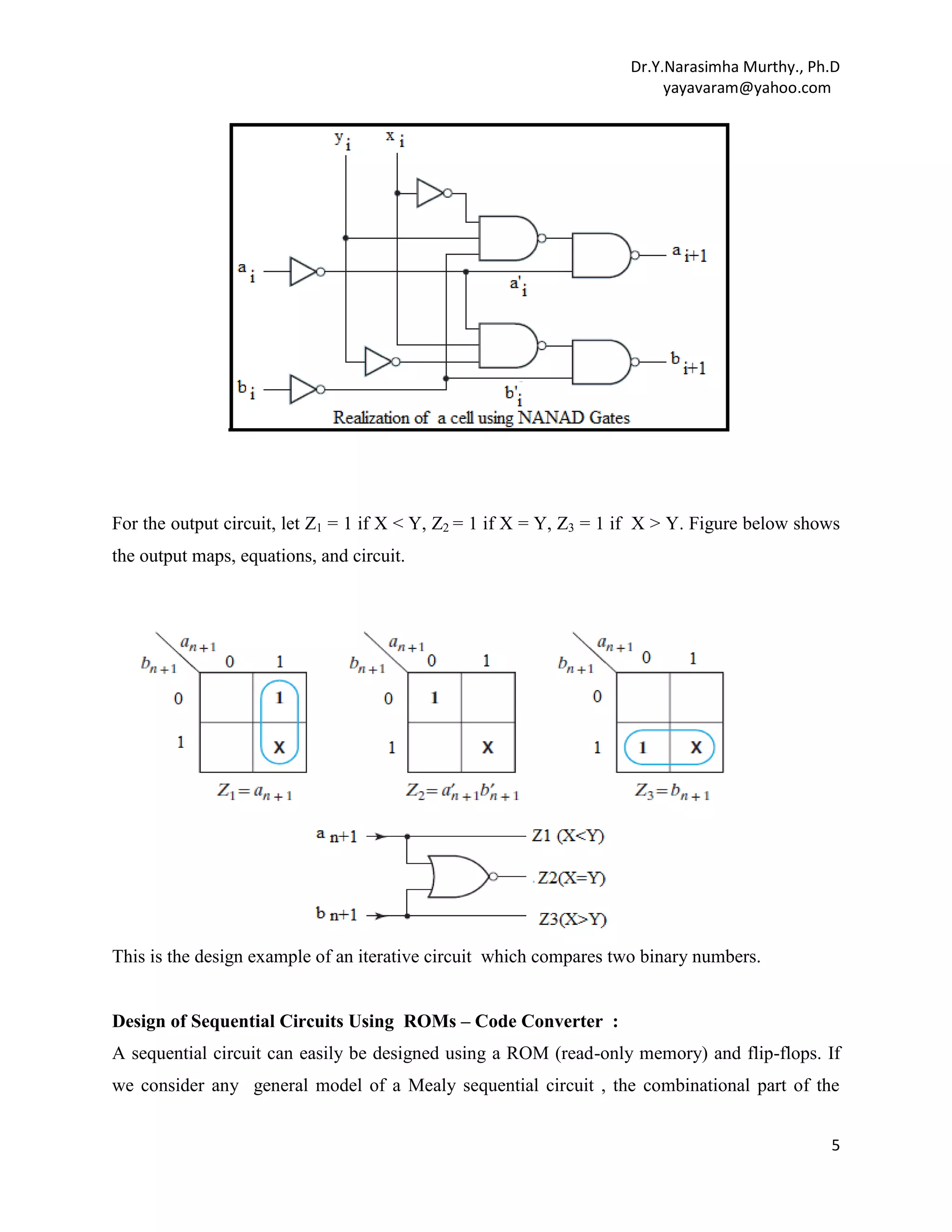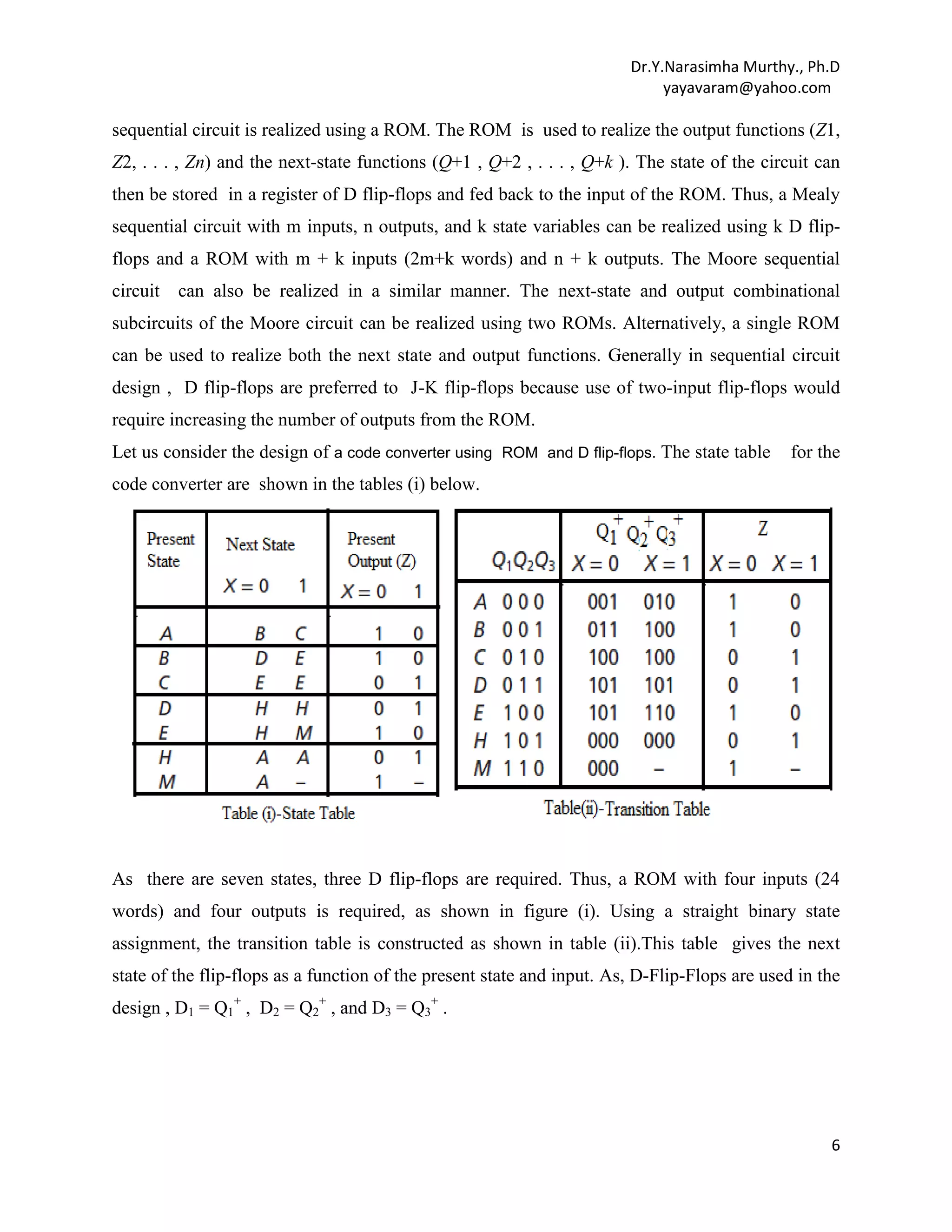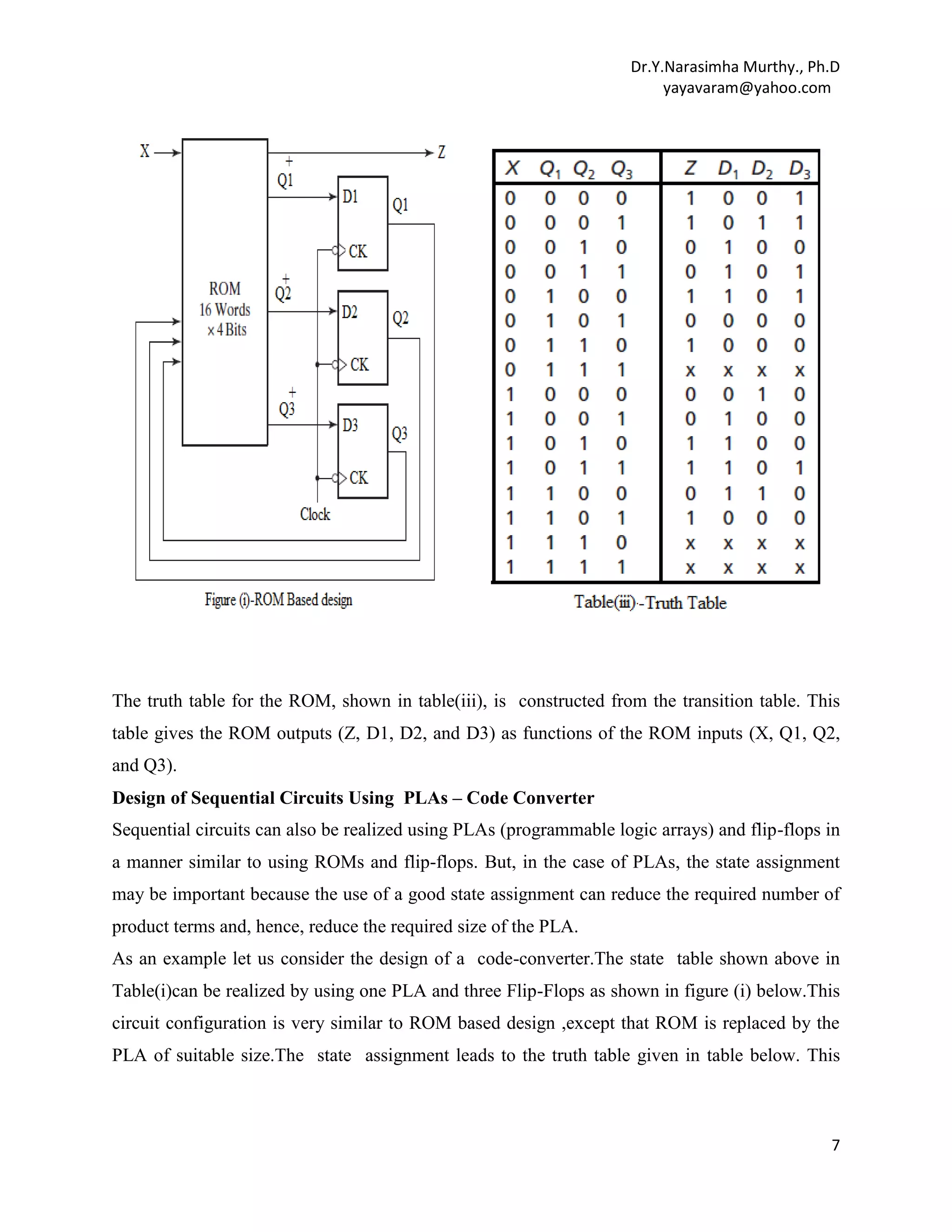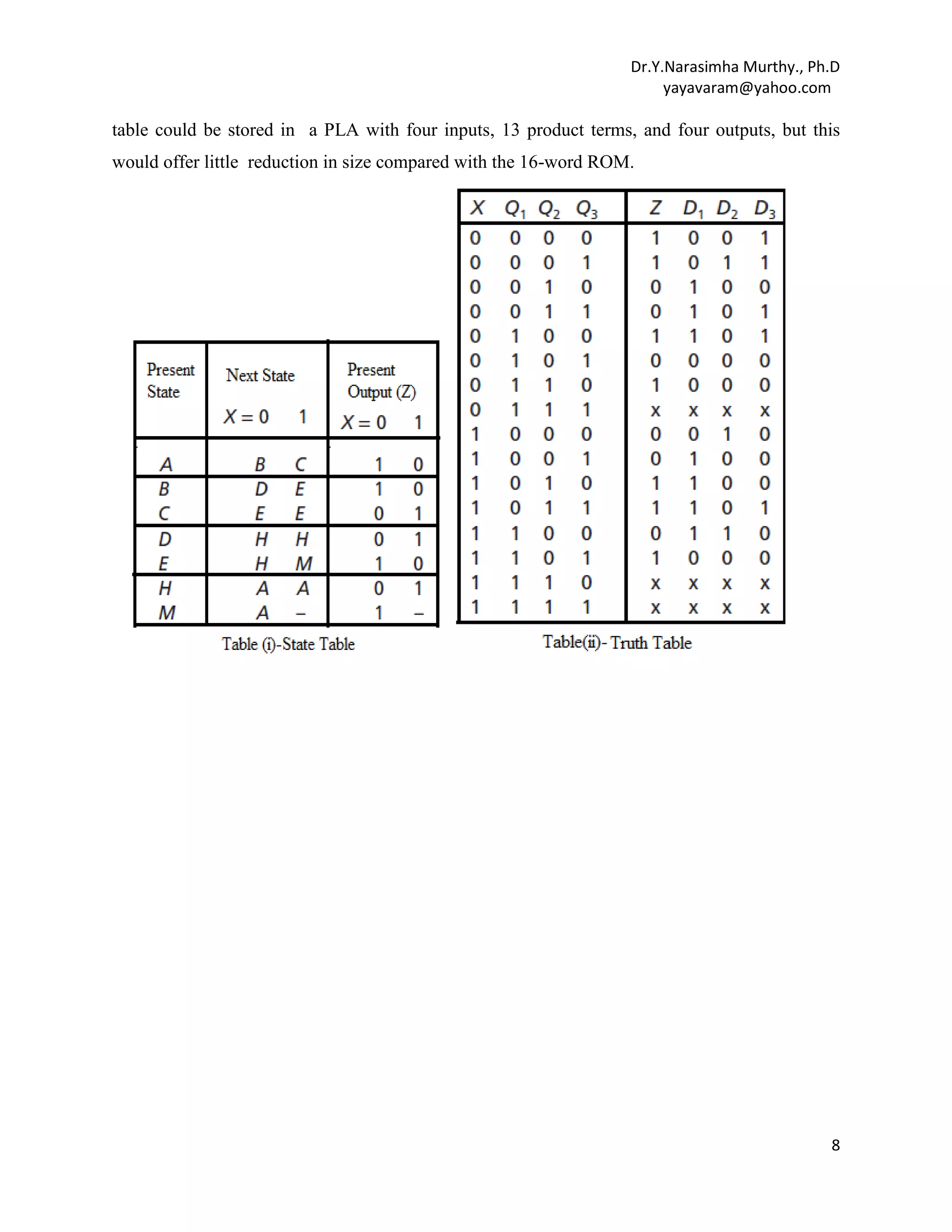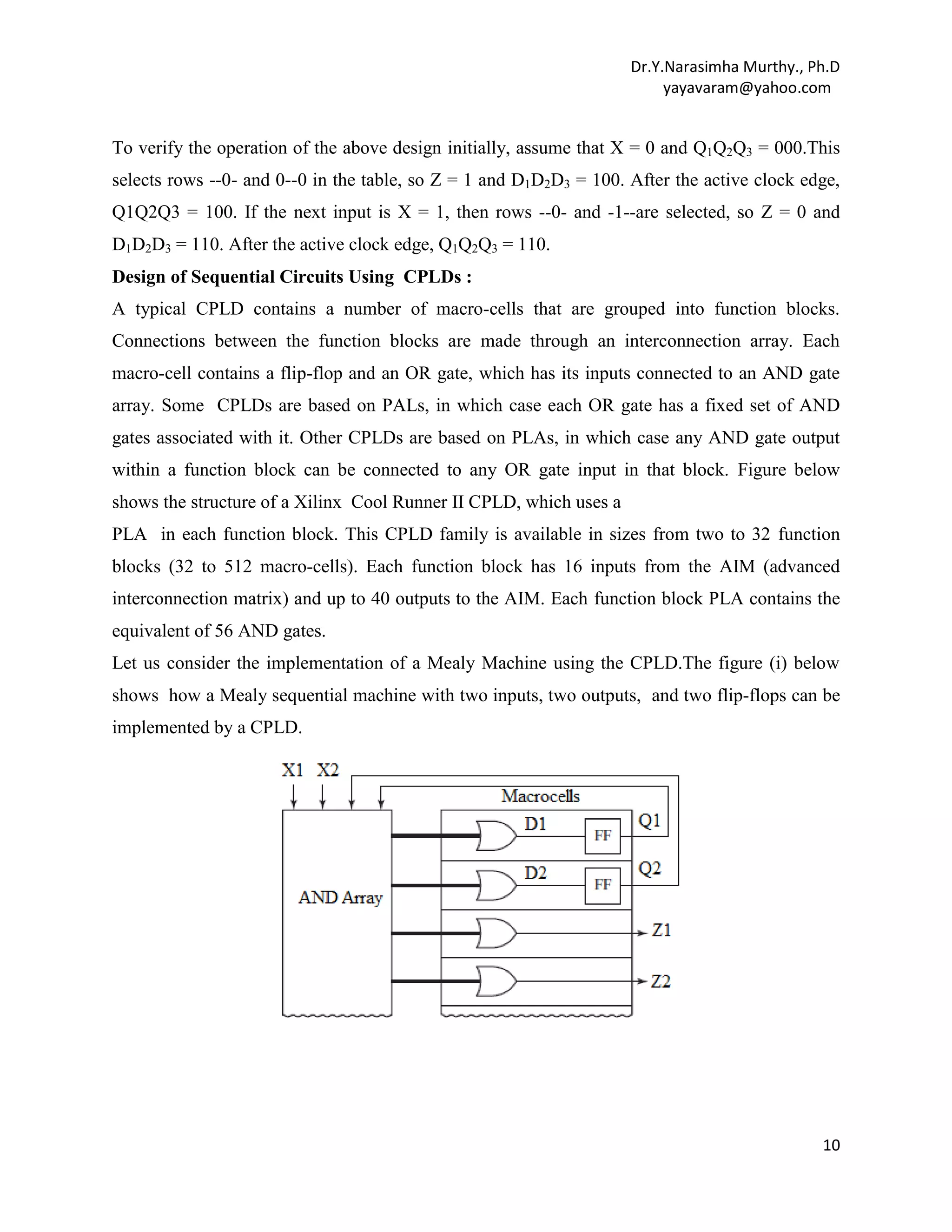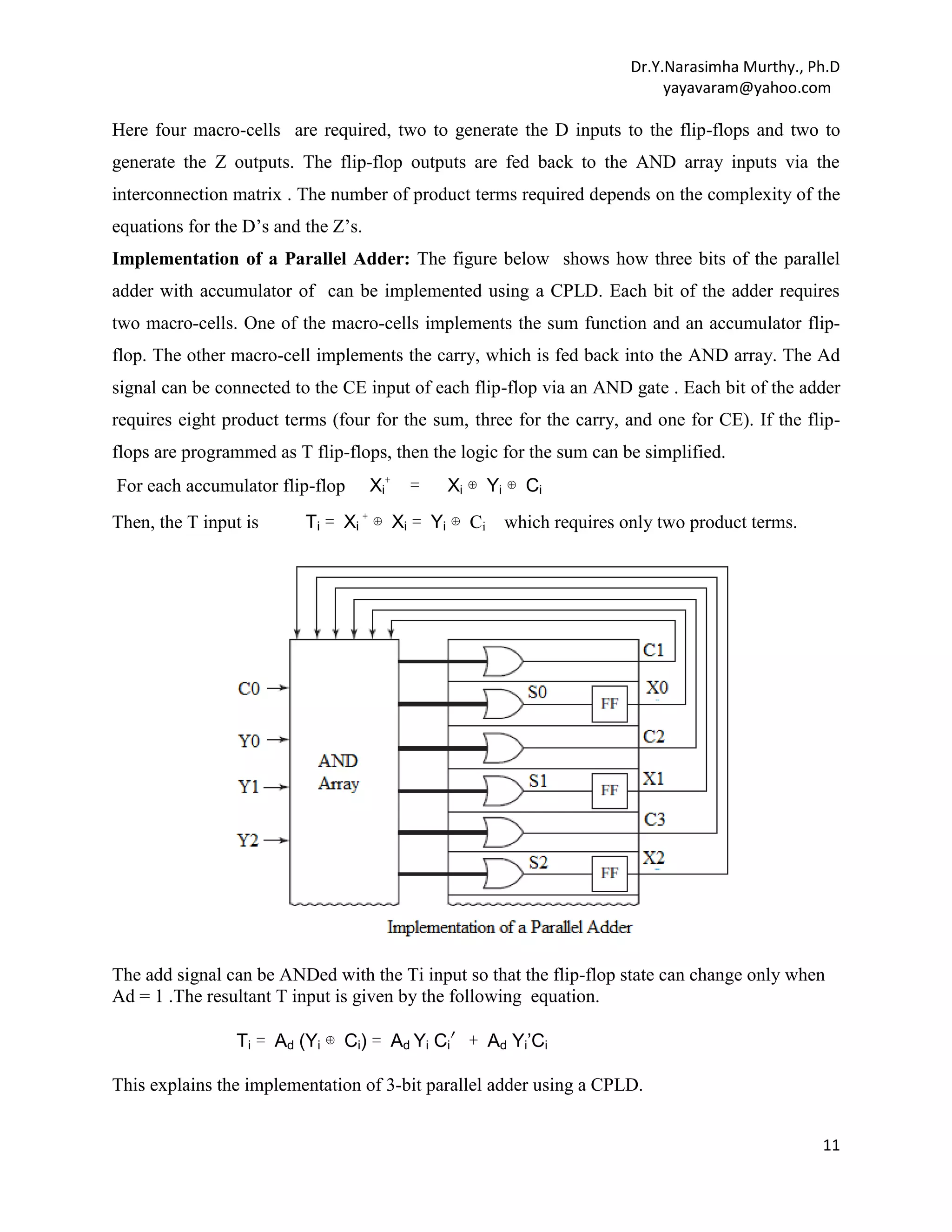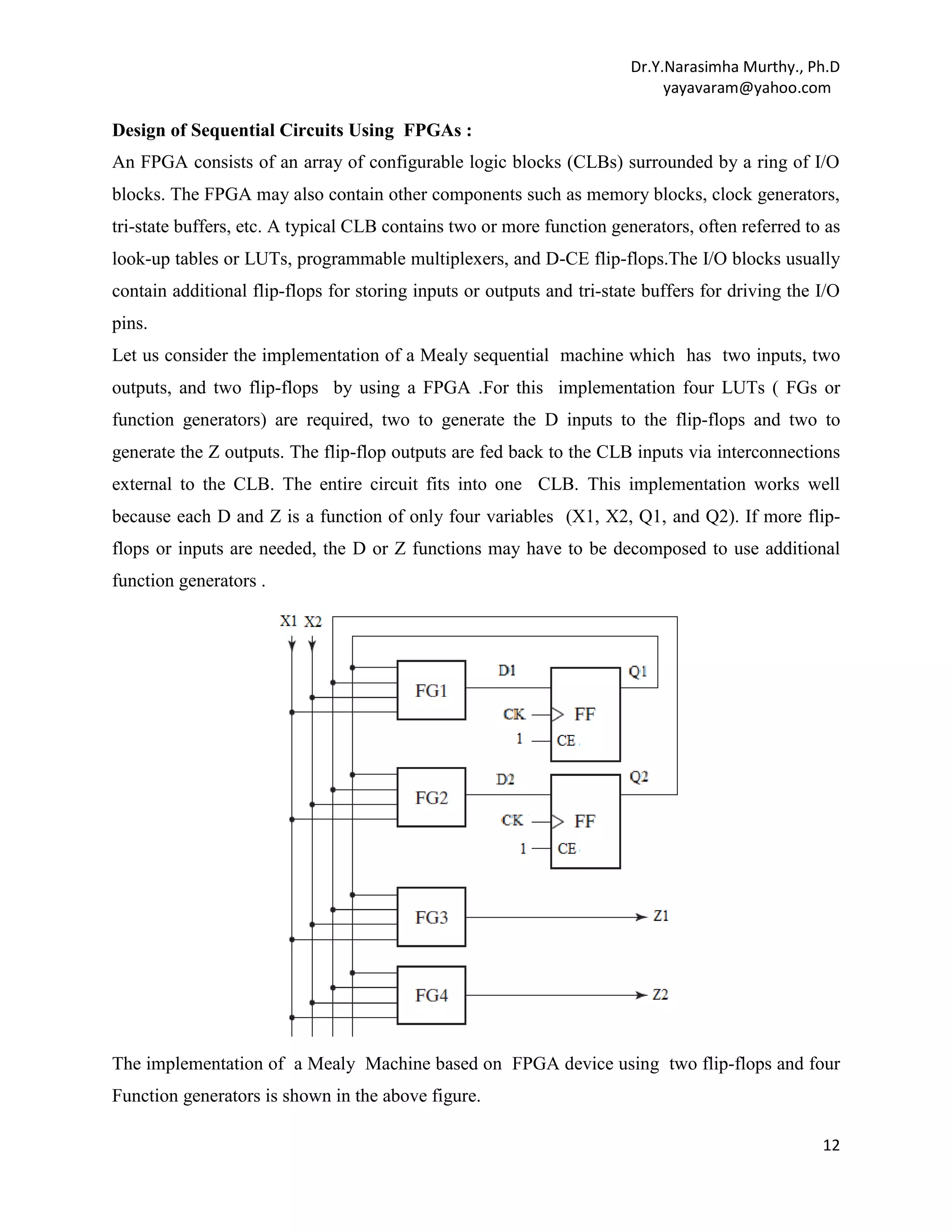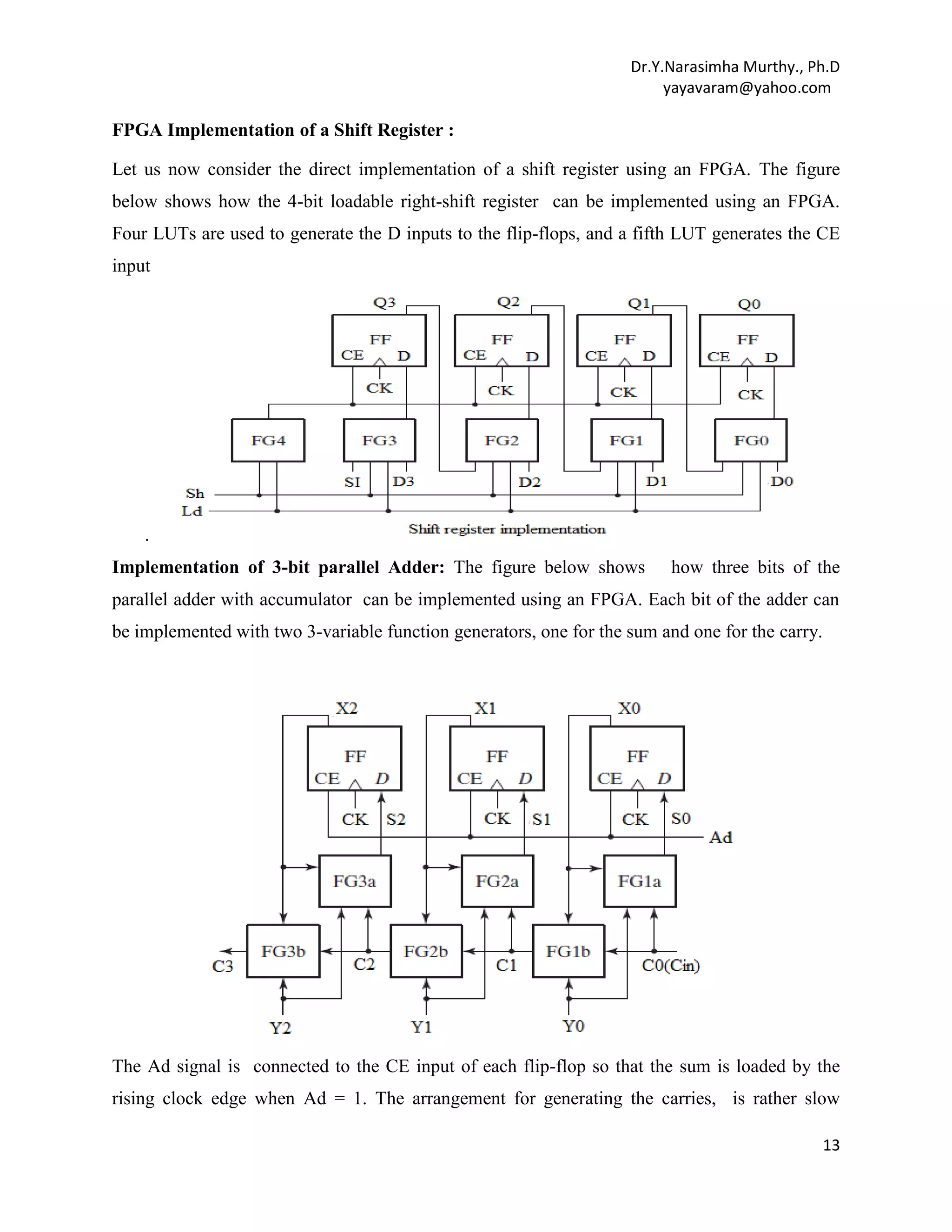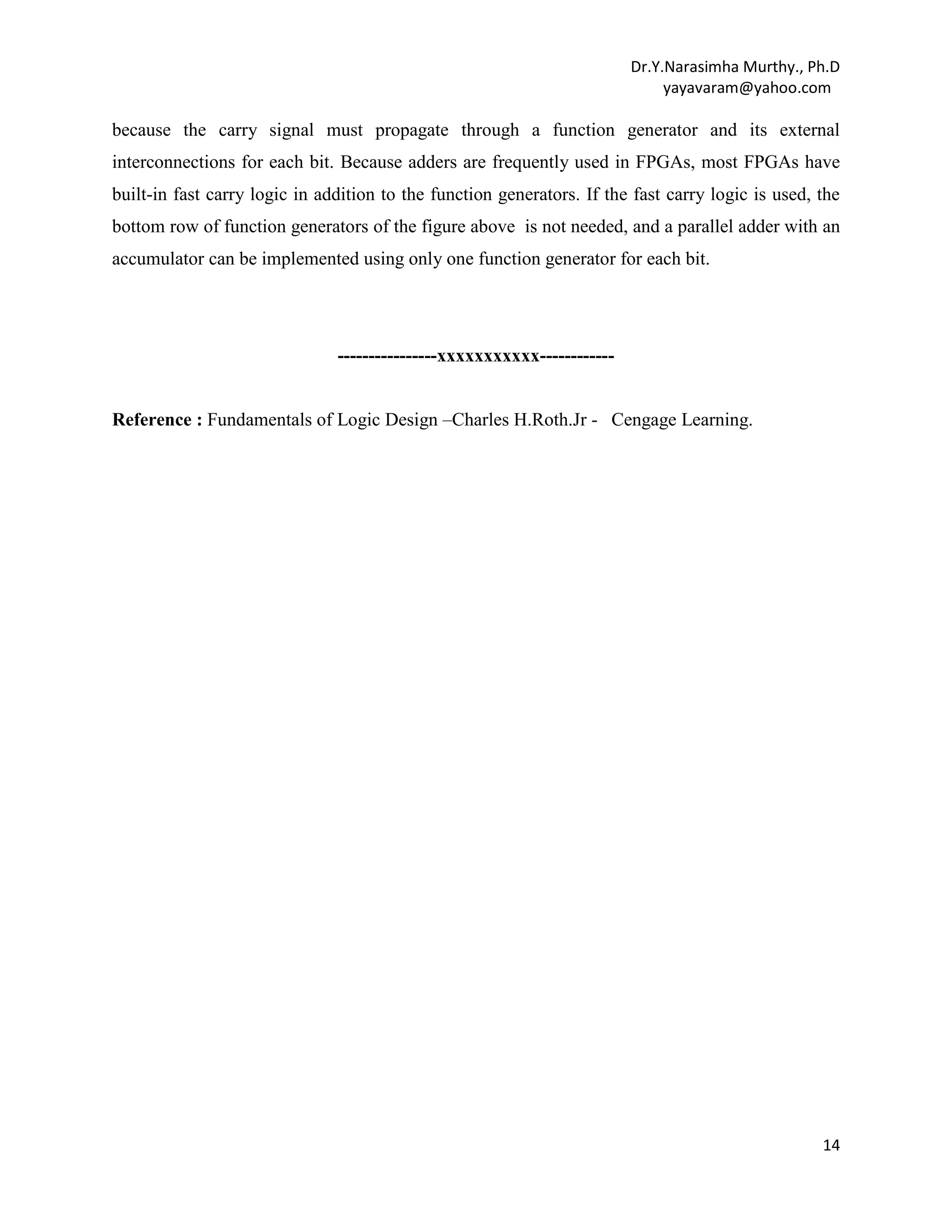This document discusses several methods for designing sequential circuits, including state table reduction, state assignment, derivation of flip-flop input equations, and realization using logic gates. It provides an example of designing a comparator circuit using an iterative approach with identical cells. The document also describes implementing sequential circuits using ROMs, PLAs, CPLDs and FPGAs, giving examples of a code converter and parallel adder circuit designs for each method.
